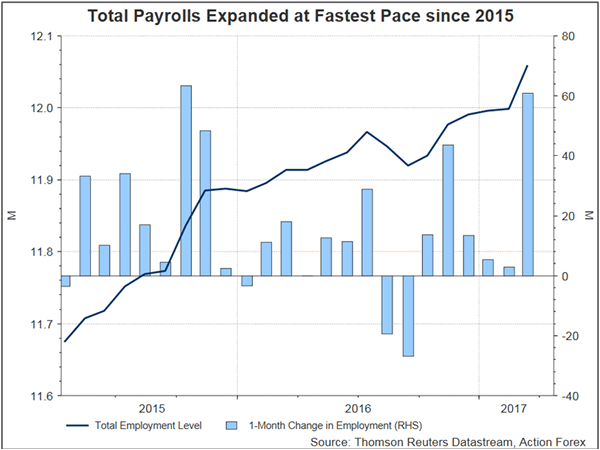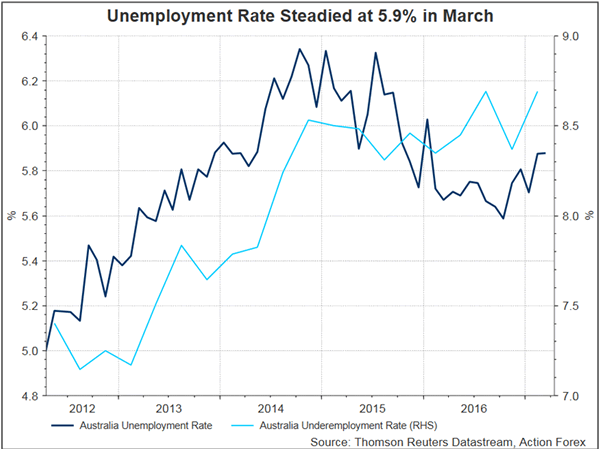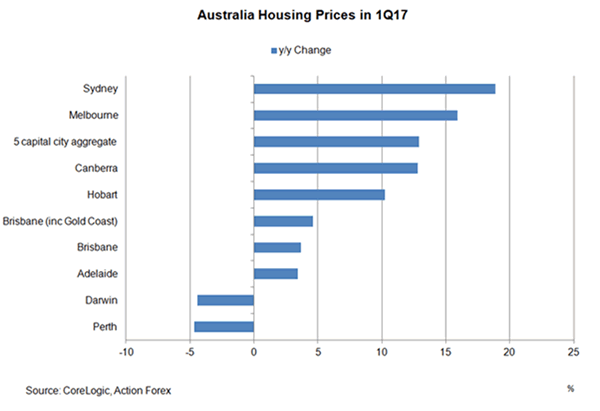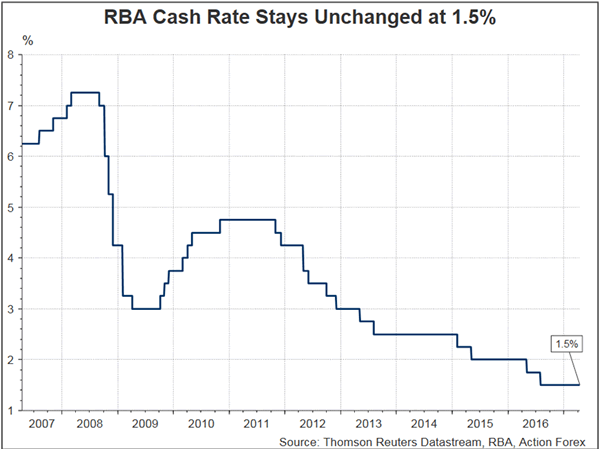RBA minutes for the April meeting came in less upbeat than the March one, underpinning concerns over developments in Australia’s labor and housing market. Policymakers concluded by noting that “developments in the labour and housing markets warranted careful monitoring over coming months”. Note, however, that the meeting was held ahead of the release of the March employment report which showed that full-time payrolls rose the most in nearly 30 years. Aussie slumped after the minutes to a 3-day low 0.552.
Softer conditions in the labour market
Policymakers acknowledged that low interest rates had continued to support moderate growth in Australia at the beginning of 2017. However, they cautioned over the weaker than expected indicators of household consumption, attributing them to the “softer conditions in the labour market”. The members were concerned over the employment market, noting that positive forward-looking indicators of labour demand had failed to lead to an improvement in labour market conditions.
We have to point out that this judgment was made before the release of the March employment report which did depict encouraging developments in the job market. Employment rose +60.9K from February, beating expectations of a +20K increase. Of which full-time jobs jumped +74.5K, the biggest increase since December 1987 while part-time jobs dropped -13.6K.

The unemployment rate steadied at 5.9% with participation rate adding +0.2 percentage point to 64.8%.

Increasing concern on housing market
Another big concern haunting the members is the housing market. The minutes suggested that “growth in housing credit continued to outpace growth in household incomes, suggesting that the risks associated with the housing market and household balance sheets had been rising”. Policymakers were apparently concerned that soft income growth has led to an increase in household debt ratios, despite modest slowdown in household credit growth. The minutes added that the current “developments needed to be kept under review and depending on how the system responds to the various measures” and “the Council of Financial Regulators would consider further measures if needed”.

Less upbeat than March
Policymakers refrained from delivering an upbeat forward guidance as it was in March. In the March minutes, RBA suggested that “year-ended growth was expected to pick up gradually to be above its potential rate over the forecast period”. However, it only noted this month that “Australian economy had continued to grow moderately at the beginning of 2017, supported by the low level of interest rates”. This apparently sounded less confident over the growth outlook. In the concluding statement, it was added that that “developments in the labour and housing markets warranted careful monitoring over coming months”.













